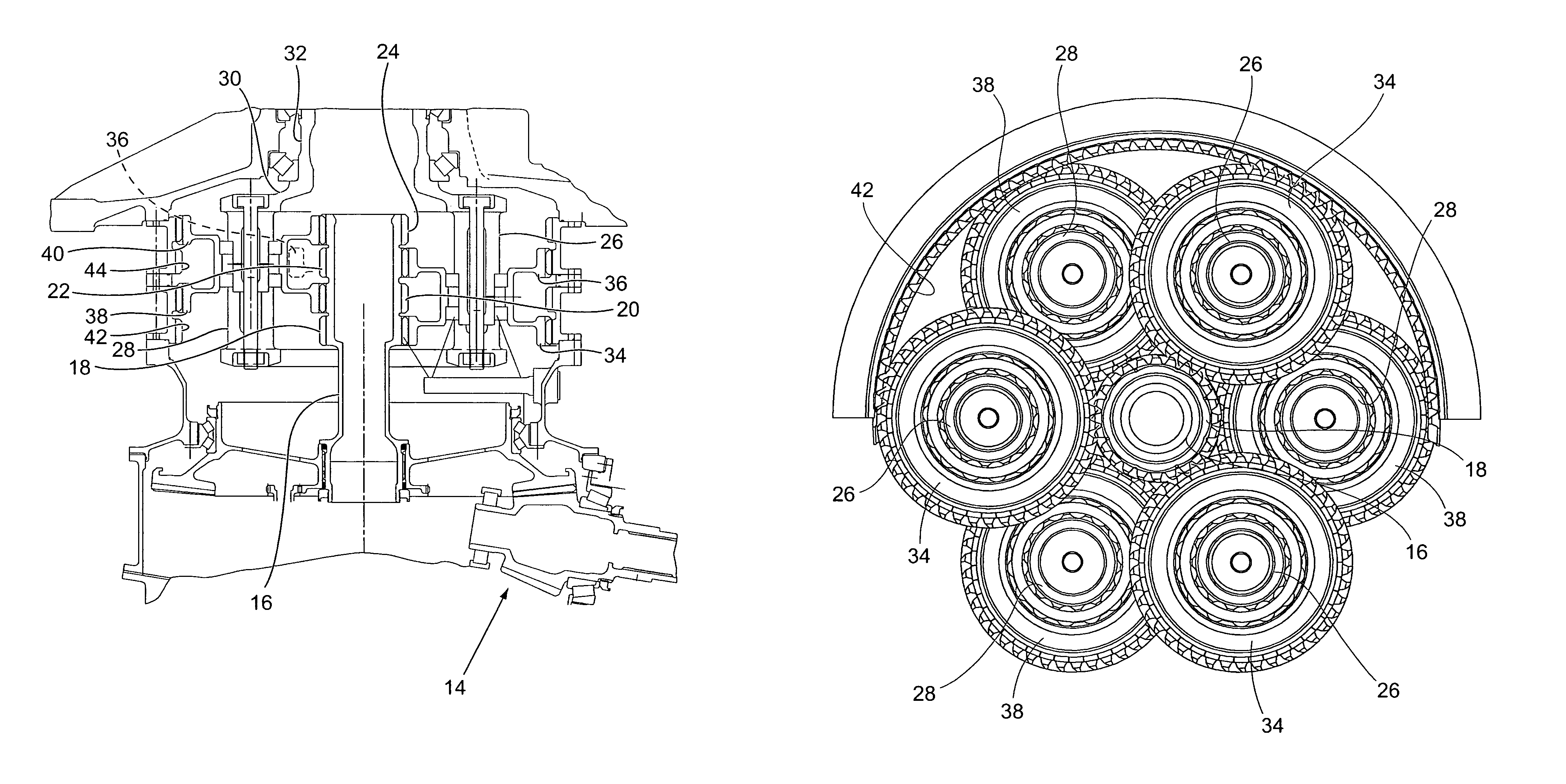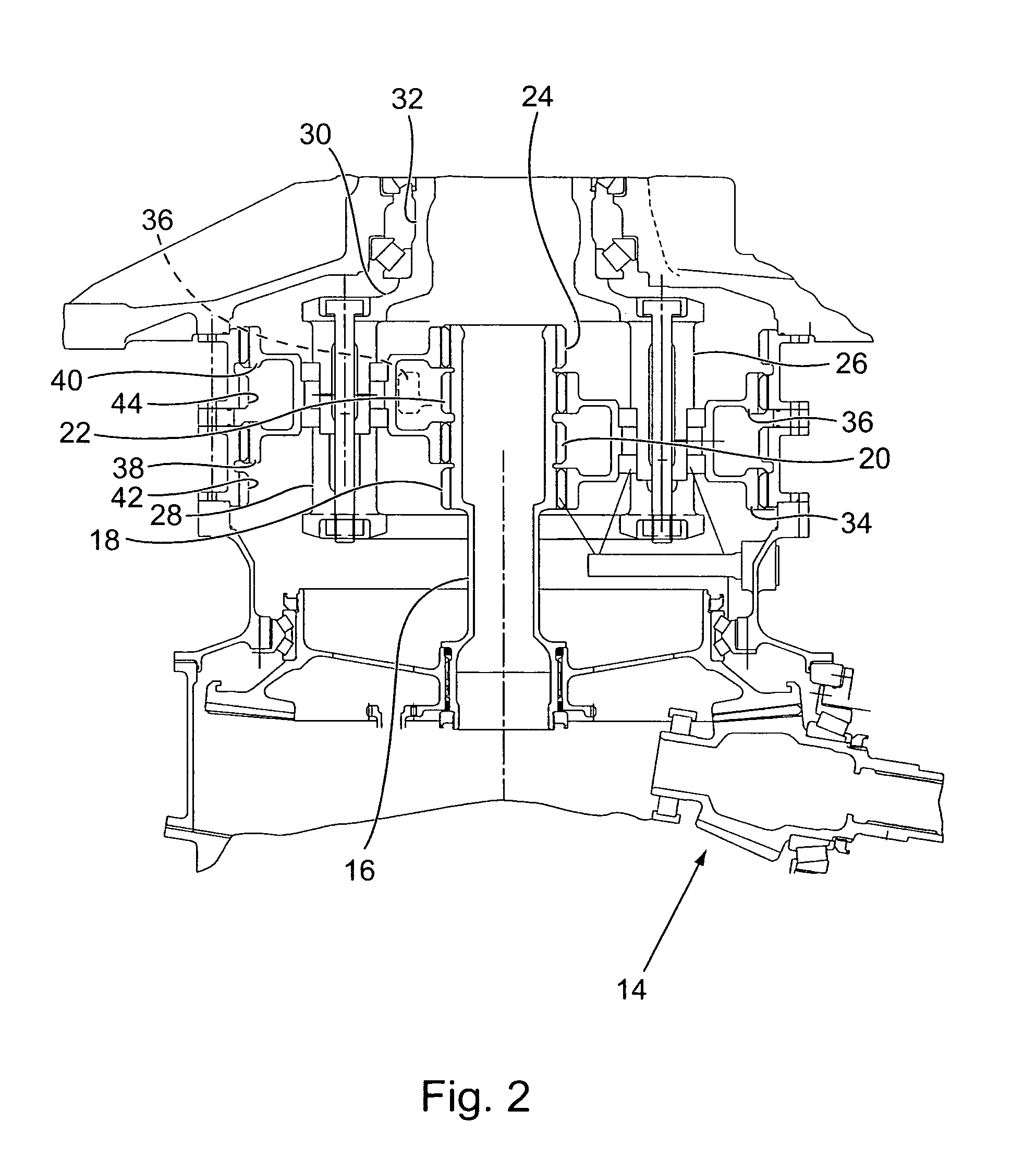High ratio, reduced size epicyclic gear transmission for rotary wing aircraft with improved safety and noise reduction
a technology gear transmission, which is applied in the direction of gearing details, gearing, transportation and packaging, etc., can solve the problems of generating high noise levels in operation, limiting the load capacity of epicyclic gear transmission, and affecting the safety of rotary wing aircraft, so as to reduce the number of parts and simplify assembly. , the effect of reducing nois
- Summary
- Abstract
- Description
- Claims
- Application Information
AI Technical Summary
Benefits of technology
Problems solved by technology
Method used
Image
Examples
first embodiment
[0035]FIGS. 2–5 show the epicyclic gear transmission of the present invention. The input drive of the transmission is from a motive source 14 of the aircraft that drives an input shaft 16 having a center axis that is also the center axis of the transmission. A sun gear cluster comprised of four sun gears 18, 20, 22, 24 is provided on the input shaft 16. The four sun gears are axially arranged in two pairs. A first pair of the sun gears 18, 22 are double helical gears having opposite hand gear teeth of equal helix angles. The second pair of the sun gears 20, 24 are also double helical gears with opposite hand gear teeth with the same helix angles as the first pair of sun gears.
[0036]Each of the sun gears 18, 20, 22, 24 meshes with clusters of planet gears mounted on planet gear shafts 26, 28 of a planet gear carrier 30. The planet gear shafts 26, 28 have center axes that are parallel with the center axis of the input shaft 16. The planet gear carrier 30 is formed integrally with an o...
fourth embodiment
[0050]the epicyclic gear transmission is basically the same as that shown in FIGS. 6–9 except that high-profile contact ratio (HCR) spur gears are used as the sun gears 54, 56 and the planet gears 68, 74 that mesh with the sun gears. This configuration of the epicyclic gear transmission simplifies assembly and allows the double helical planet gears 70, 72, 76, 78 that mesh with the ring gears 80, 82 to be true double helical gears having equal helix angles of opposite hands. This configuration eliminates any axial thrust loads on the stationary internal ring gears 80, 82. The HCR gears also provide noise reduction without the additional thrust load that results from helical gears.
[0051]The use of the double helical planet gears on each planet gear shaft that mesh with the internal ring gears of the embodiments of the transmissions described improves the safety of each of the embodiments of the epicyclic gearing transmission. The double helical gears meshing with the internal ring ge...
PUM
 Login to View More
Login to View More Abstract
Description
Claims
Application Information
 Login to View More
Login to View More - R&D
- Intellectual Property
- Life Sciences
- Materials
- Tech Scout
- Unparalleled Data Quality
- Higher Quality Content
- 60% Fewer Hallucinations
Browse by: Latest US Patents, China's latest patents, Technical Efficacy Thesaurus, Application Domain, Technology Topic, Popular Technical Reports.
© 2025 PatSnap. All rights reserved.Legal|Privacy policy|Modern Slavery Act Transparency Statement|Sitemap|About US| Contact US: help@patsnap.com



